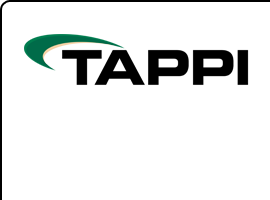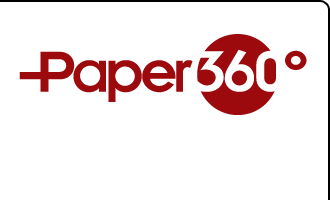Economic Pressures Drive CPG Packaging Decisions Between Cost and Sustainability
![]() Print this Article | Send to Colleague
Print this Article | Send to Colleague
Packaging Digest reports that consumer packaged goods (CPG) brands are tightening their collective belts by optimizing their packaging and evolving their business strategies to stay lean and competitive amid an imperfect storm of lower consumer spending and the uncertain future of proposed tariffs.
Add to that, shelf competition is at an all-time high, thanks in part to price-lowering efforts from private label brands and retailers such as Walmart, Target, and CVS. Across the board, retailers are vying for loyalty among price-conscious customers who still demand healthy, high-quality products with sustainably minded packaging.
To make ends profitably meet, brands of all sizes are reluctantly cutting perceived excesses by not only reevaluating their packaging materials and expenses, but also eliminating jobs and streamlining/restructuring operations, with some even shuttering entire facilities.
In its recent annual U.S. Brand Owner Packaging Study, L.E.K. Consulting polled 400 United States brand managers and packaging stakeholders to find that 83% expected packaging costs to increase in 2025. And while 99% of brand owners said packaging is highly important to brand success, 93% have made changes in their packaging materials over the past four years, driven in part by the desire to use more sustainable materials.
US brands expected packaging cost increases in 2025. Yet they still plan to double down with sustainable packaging activities — led by switching to suppliers who support eco-initiatives and use renewable energy.
Identifying the pressures on food and beverage packaging
L.E.K.’s survey results dovetail with market observations from Sean Bisceglia, CEO of Product Ventures/COHO, an agency focused on packaging structure design for brand innovation and renovation. When it comes to standing out at retail, Bisceglia says there have been major shifts in how CPG giants think about their packaging and asserts that it’s not just about looking good anymore. Even the biggest players are rethinking their materials and designs, making fundamental changes to materials, supply chains, and product design.
Packaging and improved operational efficiencies represent frontline issues in CPG cost-cutting efforts. Bisceglia says striking a balance boils down to diversified pack sizes, embracing sustainability initiatives, streamlining supply chains, and investing in packaging innovation and artificial intelligence (AI) technologies.
He says there are four primary issues impacting how brands feel about packaging. He outlines the issues as well as each of their underlying factors:
1. Mounting Economic Pressures
- Cost. The increased costs of ingredients, packaging materials, labor, and transportation are putting pressure on CPGs to raise prices, potentially impacting consumer spending.
- Supply Chain Disruptions. Supply chain issues in the form of trade wars, tariffs, and logistical challenges — as well as material shortages and transportation costs — continue to impact CPG companies, forcing them to find ways to reduce costs.
- Improved efficiencies. Companies are seeking packaging solutions that optimize production and reduce costs, such as simplifying materials and designs. Addressing this often involves optimizing internal processes and accelerating innovation cycles through advanced prototyping and development.
2. Shifts in Consumer Preferences
- Sustainability. Consumers are increasingly demanding sustainable packaging options, putting pressure on companies to reduce reliance on single-use plastics and offer recyclable or compostable alternatives. This requires comprehensive tools and insights to evaluate environmental impact and identify greener alternatives.
- Transparency and Information. Consumers want to see clear information about ingredients, origin, and sustainability practices on packaging.
- Health and Wellness. A growing interest in healthier food options is influencing packaging to reflect this trend, with demand for smaller portions, convenient on-the-go options, and healthier snack packs.
3. Growing Regulatory Scrutiny
- Strict Regulations. Food labeling, packaging composition, and sustainable sourcing are all subject to increasing regulations, forcing CPGs to adapt and ensure compliance.
- Extended Producer Responsibility (EPR) Schemes. In many regions, regulations are shifting the burden of managing end-of-life packaging onto manufacturers, increasing their responsibility and costs.
4. Increased Focus on Sustainable Packaging
- Circular Economy. CPGs are exploring innovative sustainable packaging materials such as plant-based alternatives and reusable or refillable options to minimize waste and support a circular economy.
- Technological Advancements. Advancements in digital printing and smart packaging can enhance sustainability by reducing material use and providing consumers with real-time product information.
How packaging and package design are impacted by cost cuts
On the packaging front, Bisceglia says CPGs are focusing on streamlining processes, reducing materials, and optimizing designs to save money — all while being conscious of sustainable packaging practices because “consumers are more likely to support environmentally friendly brands.”
But the switch to more sustainable packaging can be especially tricky in today’s financial climate because a lot rides on striking the perfect balance between improved sustainability and cost-effectiveness, according to L.E.K. Consulting’s Managing Director, Jon Moss.
Moss says some of the factors driving these materials changes include the desire to move to sustainable packaging. Although they often come with a slightly higher cost, they can also have potential revenue-driving cost benefits. These can include improved shelf-life extension, upgraded alignment to consumer preferences, and an elevated aesthetic appearance.
“At the end of the day, there’s still velocity behind sustainable packaging, but I do think the willingness to pay in the current environment where it’s very difficult for brand owners to pass price onto their customers is tricky, so [brands] are being measured,” he says.
Bisceglia says improved sustainability is one of four ways packaging and packaging design are being impacted by CPG cost-cutting measures. Here’s his rundown:
1. Material Elimination and Reduction
- Reducing packaging layers. CPG brands are eliminating unnecessary layers of packaging, such as inner wrappers or decorative boxes, to reduce material costs. Expert design and engineering capabilities are crucial for optimizing structural designs for material reduction and lightweighting without compromising protection or consumer experience.
- Lightweighting. Using lighter materials like PET plastic instead of heavier options like glass can significantly reduce shipping costs.
- Customized packaging. Using custom-sized boxes that fit the product perfectly can reduce space and material waste compared to standard-sized boxes.
2. Emphasizing Sustainable Packaging & Practices
- Recycled and biodegradable materials. CPGs are shifting toward using more recycled and biodegradable materials in their packaging to address environmental concerns and appeal to sustainable consumers. Utilizing robust data and assessment tools is key to informing these critical material decisions, helping engineers assess and minimize the carbon footprint of structural designs.
- Sustainable packaging practices. Implementing sustainable practices like reducing waste, using less material, and designing for recyclability can improve brand image and attract environmentally conscious customers.
3. Harnessing Technological Advancements
- Utilizing digital printing. Digital printing offers greater control over print quality, color consistency, and cost-effectiveness, especially for short-run or custom designs.
- Leveraging virtual reality (VR) testing. Evaluating packaging designs and gathering consumer feedback before production with VR can reduce the need for physical prototypes and deliver cost and time savings. Advanced consumer learning environments, including virtual testing, allow for gathering real-time consumer feedback on packaging designs early in the process, significantly reducing the need for costly physical prototypes and accelerating time to market.
4. Ecommerce Optimization
Packaging can be designed with ecommerce platforms in mind, considering factors like shelf space and how the package appears on the product page.
EPR fees
A final factor with packaging in its crosshairs is Extended Producer Responsibility fees, which Bisceglia says are directly impacting packaging departments and contributing to financial pressures.
“EPR programs, which are becoming more common in the US, require manufacturers to take financial responsibility for the end-of-life management of their packaging materials, including recycling and disposal,” he says. “This means packaging departments must now factor in additional costs, including EPR fees themselves, as well as potential costs associated with changing packaging design or materials to comply with EPR regulations.”
His suggestion for help navigating the challenges of these added costs? Enlisting the aid of strategic packaging design and engineering expertise. “[It] can help companies not only comply with these regulations but also proactively design solutions that can minimize future EPR costs by optimizing material choices and end-of-life considerations,” he concludes.


